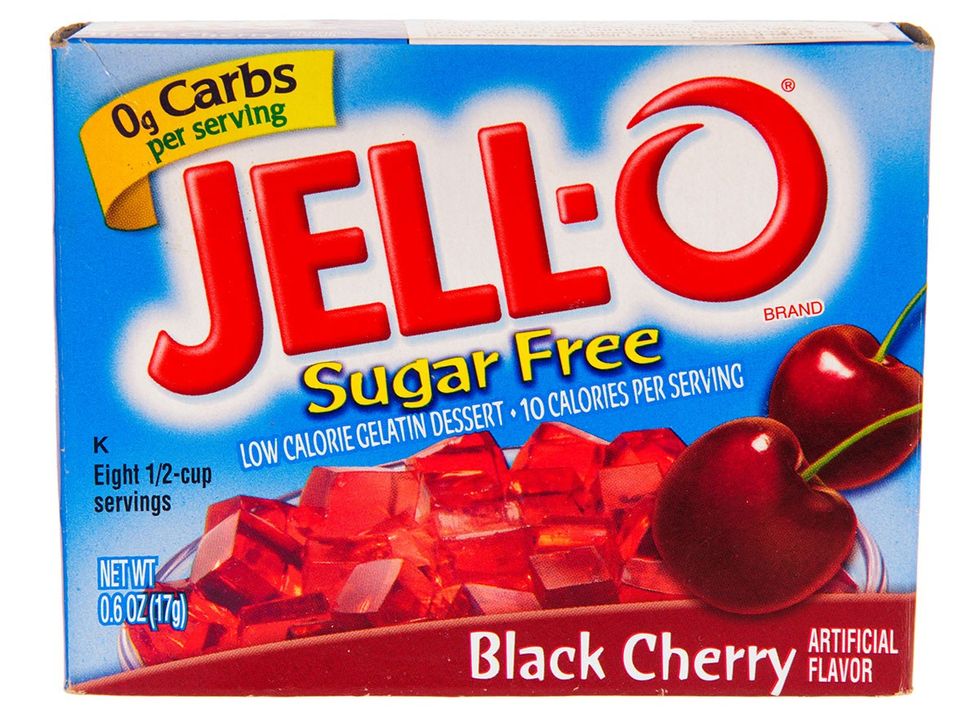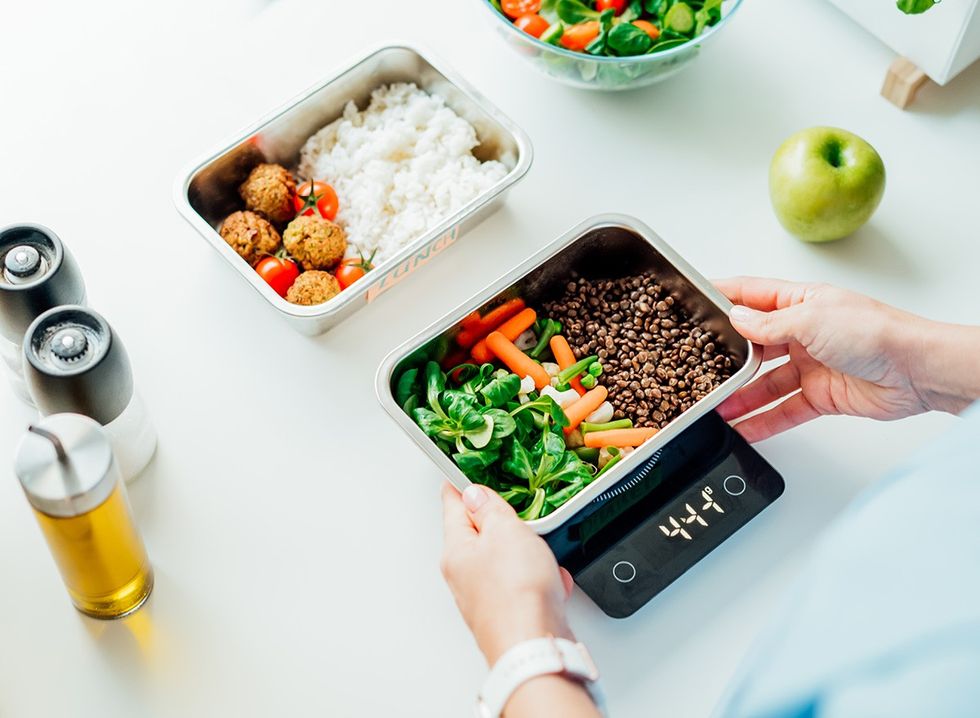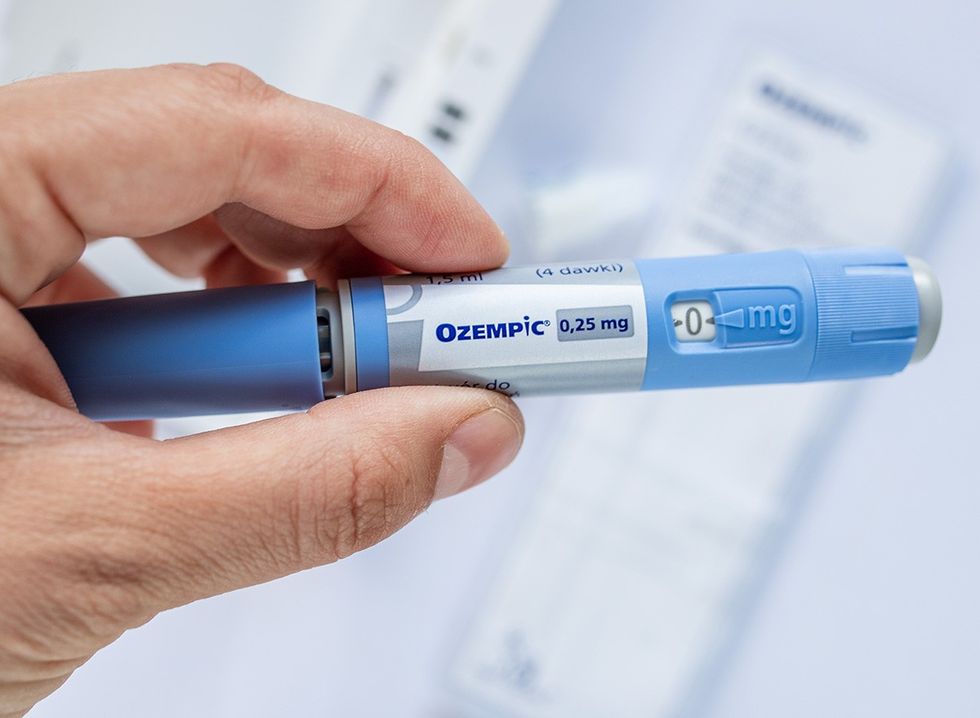Let's face it—hitting 40 comes with some unwelcome surprises for most of us. Suddenly, those extra pounds seem to appear out of nowhere, and the weight loss strategies that worked in your 30s just don't cut it anymore. But before you throw in the towel, here's some good news: certain foods can actually help kick your metabolism back into gear.
We've dug into the latest research from top medical institutions and talked to leading experts to uncover the foods that can help you burn fat after 40. No fad diets or miracle pills—just real, science-backed nutrition that works.
Why Your Body Changes After 40 (And What to Do About It)
 Shutterstock
Shutterstock"It doesn't matter what you've always done before—that doesn't fly anymore," says Dr. Monica Christmas, who runs the menopause program at University of Chicago Medicine. She's seen countless patients struggle with the same story. "When your hormone levels drop, your body starts losing muscle, and that means you're burning fewer calories even at rest."
Dr. Robert Creel from Cleveland Clinic puts it bluntly: "Your muscles are like engines that burn fuel. The more muscle you have, the more calories you burn just sitting on your couch." After 40, maintaining that engine becomes job number one.
Ready to refuel your body's fat-burning potential? Let's dive into the foods that can help.
RELATED: 8 High-Protein Foods with Nearly Zero Calories That Melt Fat
1. Lean Proteins
 Lean ProteinShutterstock
Lean ProteinShutterstockThink of protein as your body's ultimate fat-fighting fuel. Chicken, fish, lean beef, tofu—they all help preserve precious muscle mass that naturally diminishes after 40.
Here's something fascinating from Harvard researchers: your body burns 15-30% of protein calories during digestion, compared to just 5-10% for carbs and a measly 0-3% for fats. That extra calorie burn happens automatically, just by choosing protein-rich foods.
Dr. Roger Blumenthal from Johns Hopkins Medicine loves to remind his patients: "Your muscles are literally the engines that burn calories in your body. Feed them right, and they'll work for you around the clock."
How to enjoy it: Start your day with eggs and veggies, grab a grilled chicken salad for lunch, or try a palm-sized portion of wild salmon for dinner. Aim for 25-30 grams of protein at each meal to keep your metabolism humming.
2. Greek Yogurt

Shutterstock
That creamy container of Greek yogurt in your fridge? It's actually a secret weapon against stubborn fat. With double the protein of regular yogurt and a healthy dose of probiotics, it's a one-two punch for your metabolism.
Dietitians at the Cleveland Clinic have found that the probiotics in yogurt help balance gut bacteria—which might be even more important after 40, when digestive efficiency naturally declines. Plus, the calcium in Greek yogurt has been linked to lower levels of belly fat, which becomes more of an issue with age.
How to enjoy it: Skip the sugary flavored versions and go for plain. Add a drizzle of honey and berries for a satisfying snack, use it as a sour cream replacement, or blend it into smoothies for a protein boost.
RELATED: 20 Foods You Didn’t Know Were Ultra-Processed
3. Fatty Fish
 Shutterstock
ShutterstockSalmon, mackerel, and sardines aren't just delicious—they're packed with omega-3 fatty acids that fight the inflammation that often increases after 40.
Scientists at the NIH discovered something remarkable: omega-3s can increase your resting metabolic rate by up to 14% and boost fat burning during exercise by a whopping 27%. Talk about a winning combination.
"When we look at heart health after 40, fatty fish really shines," says a cardiologist at Johns Hopkins Medicine. "The same omega-3s that protect your heart are also helping reduce that internal inflammation that makes weight loss so difficult in midlife."
How to enjoy it: Aim for two servings of fatty fish weekly. Try simple grilled salmon with lemon or sardines on whole-grain toast for lunch, or add mackerel to your favorite salad.
4. Whole Grains
 30. QuinoaShutterstock
30. QuinoaShutterstockForget what you've heard about cutting all carbs. Your body after 40 still needs them—just the right kind.
Researchers at Cleveland Clinic found something surprising when they studied whole grains in people under 50: those eating whole grains instead of refined ones had three times better blood pressure readings. That's huge for metabolic health, which directly impacts how well you burn fat.
"Whole grains provide steady energy without the crashes," explains a nutrition researcher at Cleveland Clinic. "After 40, those energy crashes can trigger stress hormones that promote fat storage, especially around the middle."
How to enjoy them: Start your day with steel-cut oats, swap white rice for brown or quinoa, and choose whole grain bread with at least 3 grams of fiber per slice.
5. Eggs
 Don’t Skip BreakfastShutterstock
Don’t Skip BreakfastShutterstockEggs have made a major comeback in nutrition circles, and for good reason. They're nature's perfect little package of high-quality protein, vitamin D, and choline—a nutrient that helps your body burn fat and is often lacking in our diets.
Research from the University of Connecticut found something interesting: people who eat eggs for breakfast naturally eat fewer calories throughout the day. The protein and healthy fats keep hunger hormones in check—a major win when battling age-related weight gain.
How to enjoy them: A two-egg breakfast with veggies and a slice of whole-grain toast makes a perfect metabolism-boosting morning meal. Hard-boiled eggs also make great portable snacks when you need something satisfying on the go.
RELATED: I'm a Nutritionist and These are the Best Banana Recipes For Weight Loss
6. Legumes
 23. ChickpeasShutterstock
23. ChickpeasShutterstockLentils, black beans, and chickpeas might not be the sexiest foods in your kitchen, but they pack a one-two punch against age-related weight gain: fiber and protein.
Harvard researchers have found that this combination helps stabilize blood sugar—crucial after 40 when insulin resistance becomes more common. When your blood sugar stays steady, you avoid the energy crashes that lead to cravings and overeating.
How to enjoy them: Toss chickpeas into your salad, add lentils to soups, try bean-based pasta, or whip up a quick lunch of black bean and avocado wrap.
7. Green Tea
 Shutterstock
ShutterstockGreen tea isn't just a soothing ritual—it's loaded with compounds that give your metabolism a gentle nudge in the right direction.
NIH research shows that the catechins and caffeine in green tea work together to boost metabolism beyond what caffeine alone can do. While no single food or drink works miracles, green tea drinkers consistently show better results in weight management studies.
How to enjoy it: Replace your afternoon coffee with green tea, or start your morning with a cup. For maximum benefits, brew your own rather than buying bottled versions with added sugar.
8. Nuts and Seeds
 Shutterstock
Shutterstock"They're calorie-dense, but that doesn't mean you should avoid them," says Harvard Health about nuts and seeds. In fact, people who regularly eat nuts tend to be leaner than those who don't—seemingly contradicting their high calorie count.
The protein, fiber, and healthy fats in almonds, walnuts, and flaxseeds create the perfect satisfied feeling that helps prevent overeating. Plus, they require more energy to digest than many other snacks.
How to enjoy them: Stick to about 1/4 cup (a small handful) daily. Add a tablespoon of ground flaxseeds to your morning smoothie, sprinkle chopped walnuts on your salad, or grab a small handful of almonds for an afternoon snack
RELATED: 20 Superfoods for People Over 50
9. Leafy Greens
 Zucchini or Kale ChipsShutterstock
Zucchini or Kale ChipsShutterstockYou've heard it your whole life: eat your greens. After 40, this advice becomes even more crucial.
"When we look at the most successful weight managers after midlife, high vegetable intake is always a common factor," notes a dietitian at Mayo Clinic. "The fiber fills you up, the nutrients support metabolism, and the volume satisfies hunger cues—all with minimal calories."
How to enjoy them: Start meals with a simple salad, add spinach to smoothies (you won't taste it), wrap sandwich fillings in large lettuce leaves instead of bread, or roast kale with a little olive oil for a crunchy snack.
10. Water

Shutterstock
It sounds too simple to be true, but researchers at the University of Utah discovered that properly hydrated people burn more calories than those who are even slightly dehydrated. In fact, dehydration can slow metabolism by as much as 3%—and many of us walk around mildly dehydrated without even realizing it.
After 40, our thirst signals often become less reliable, making conscious hydration even more important.
How to enjoy it: Start the day with a full glass of water, keep a refillable bottle with you, add fruit slices or herbs for natural flavor, and eat water-rich foods like cucumber, watermelon, and strawberries.
Putting It All Together: Your After-40 Eating Strategy
 Shutterstock
ShutterstockHere's what Dr. M. Regina Castro from Mayo Clinic tells her patients who are struggling with midlife weight changes: "You need to reset your body's metabolic expectations through consistent, gradual changes. Your meals should feature lean proteins alongside fruits and vegetables—this combination supports your changing metabolism."
Cleveland Clinic experts have another crucial tip: when you eat matters too. "Your body processes the exact same food differently depending on the time of day," they explain. "After 40, eating earlier in the day tends to work better for metabolism than late-night meals."
Dr. Christmas cuts right to the chase with her patients: "You can't exercise your way out of a bad diet, and you can't eat your way out of being inactive. After 40, you need both pieces working together."
The Bottom Line
 5 Menopause-Soothing Foods for Quick ReliefShutterstock
5 Menopause-Soothing Foods for Quick ReliefShutterstockThese 10 foods aren't magical—they work by supporting your body's changing needs after 40. They help maintain muscle mass, reduce inflammation, stabilize blood sugar, and keep your energy levels steady—all crucial factors in maintaining a healthy weight in midlife and beyond.
The best news? They're delicious, accessible, and can easily become part of your everyday eating. No extreme diets or bizarre superfoods required—just real, wholesome nutrition that works with your body, not against it.
It’s important to remember that weight management after 40 is about more than just food. Regular strength training, quality sleep, stress management, and staying hydrated all work together with good nutrition to keep your metabolism running at its best. And if you enjoyed this article, take advantage of these 15 Quick Ways to Lose Body Fat Percentage in a Week.



















 The Power of Green GuardiansShutterstock
The Power of Green GuardiansShutterstock Shutterstock
Shutterstock Shutterstock
Shutterstock Shutterstock
Shutterstock BerriesShutterstock
BerriesShutterstock 44. Brussels sprouts: 43 caloriesShutterstock
44. Brussels sprouts: 43 caloriesShutterstock Shutterstock
Shutterstock Shutterstock
Shutterstock Shutterstock
Shutterstock






 Shutterstock
Shutterstock Shutterstock
Shutterstock Shutterstock
Shutterstock Shutterstock
Shutterstock Shutterstock
Shutterstock Shutterstock
Shutterstock Shutterstock
Shutterstock Shutterstock
Shutterstock Shutterstock
Shutterstock Shutterstock
Shutterstock
 2. Dill Pickles: 12 caloriesShutterstock
2. Dill Pickles: 12 caloriesShutterstock 1. Sugar-free Jello: 11 caloriesShutterstock
1. Sugar-free Jello: 11 caloriesShutterstock Shutterstock
Shutterstock Sweet PotatoesShutterstock
Sweet PotatoesShutterstock BerriesShutterstock
BerriesShutterstock Shutterstock
Shutterstock Low-Carb Noodle SolutionShutterstock
Low-Carb Noodle SolutionShutterstock Shutterstock
Shutterstock 9. Zucchini: 17 caloriesShutterstock
9. Zucchini: 17 caloriesShutterstock
 Shutterstock
Shutterstock Shutterstock
Shutterstock PopcornShutterstock
PopcornShutterstock Shutterstock
Shutterstock Salads with DressingShutterstock
Salads with DressingShutterstock Shutterstock
Shutterstock Shutterstock
Shutterstock Training on an Empty StomachShutterstock
Training on an Empty StomachShutterstock

 Shutterstock
Shutterstock Lean ProteinShutterstock
Lean ProteinShutterstock
 Shutterstock
Shutterstock 30. QuinoaShutterstock
30. QuinoaShutterstock Don’t Skip BreakfastShutterstock
Don’t Skip BreakfastShutterstock 23. ChickpeasShutterstock
23. ChickpeasShutterstock Shutterstock
Shutterstock Shutterstock
Shutterstock Zucchini or Kale ChipsShutterstock
Zucchini or Kale ChipsShutterstock
 Shutterstock
Shutterstock 5 Menopause-Soothing Foods for Quick ReliefShutterstock
5 Menopause-Soothing Foods for Quick ReliefShutterstock

 I'm a Nutritionist and These 9 High-Protein Snacks Keep My Clients Full While Losing 50 Pounds
I'm a Nutritionist and These 9 High-Protein Snacks Keep My Clients Full While Losing 50 Pounds
 Shutterstock
Shutterstock 2. Processed FoodsShutterstock
2. Processed FoodsShutterstock Shutterstock
Shutterstock Shutterstock/Prostock-studio
Shutterstock/Prostock-studio Shutterstock
Shutterstock Pro TipsShutterstock
Pro TipsShutterstock Shutterstock
Shutterstock Shutterstock
Shutterstock Shutterstock
Shutterstock Shutterstock
Shutterstock Don’t Drink as Much AlcoholShutterstock
Don’t Drink as Much AlcoholShutterstock Most Women on GLP-1s Are Making a Few Common MistakesShutterstock
Most Women on GLP-1s Are Making a Few Common MistakesShutterstock Soda and Sugary DrinksShutterstock
Soda and Sugary DrinksShutterstock Shutterstock
Shutterstock Eat BreakfastShutterstock
Eat BreakfastShutterstock And Improve Insulin SensitivityShutterstock
And Improve Insulin SensitivityShutterstock Belly Flab Strip Tip: Sugar and Fat Calories Leave Its Mark on Your BodyShutterstock
Belly Flab Strip Tip: Sugar and Fat Calories Leave Its Mark on Your BodyShutterstock Shutterstock
Shutterstock The Drugs Mimic the GLP-1 Hormone Naturally Produced by the BodyShutterstock
The Drugs Mimic the GLP-1 Hormone Naturally Produced by the BodyShutterstock